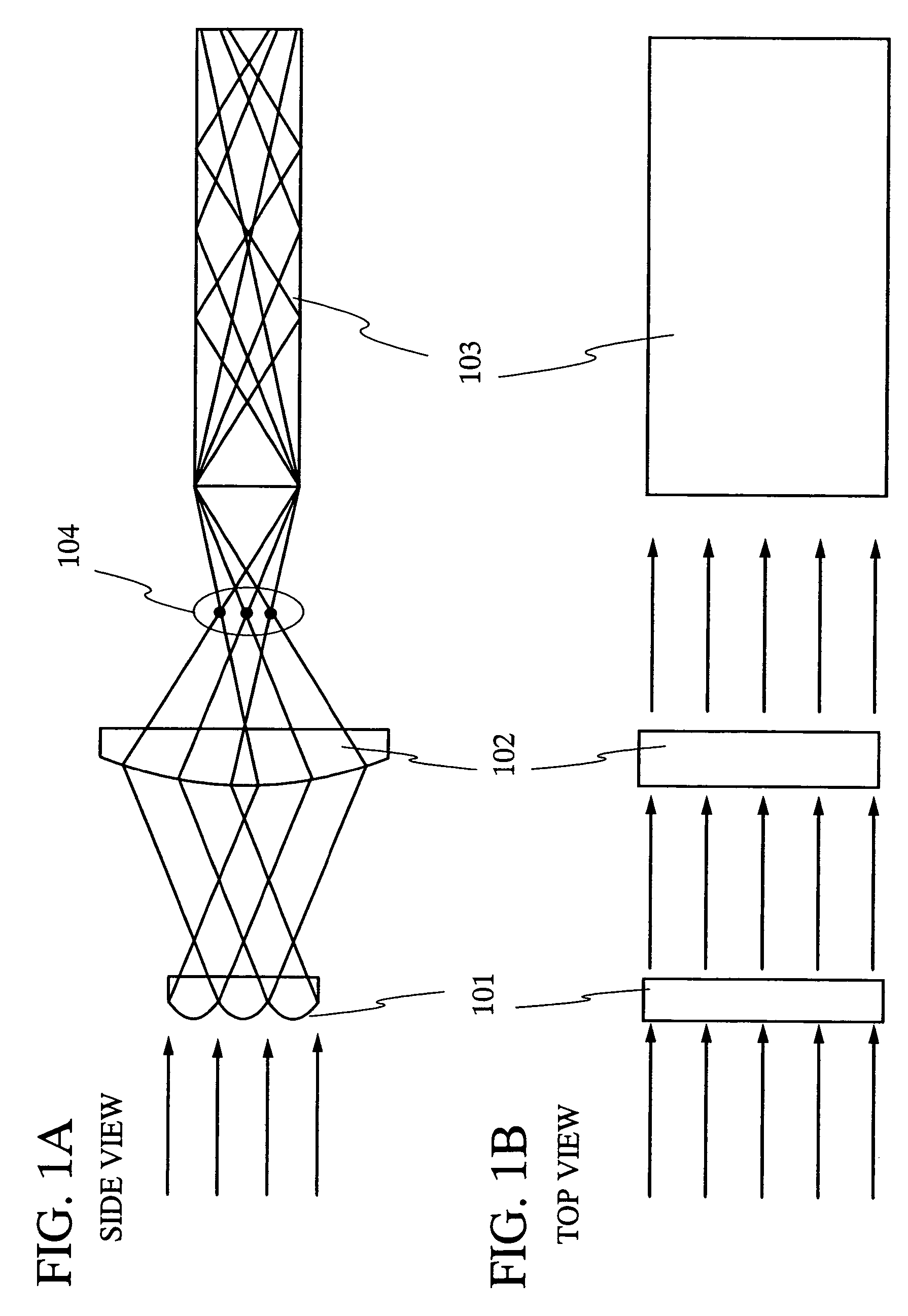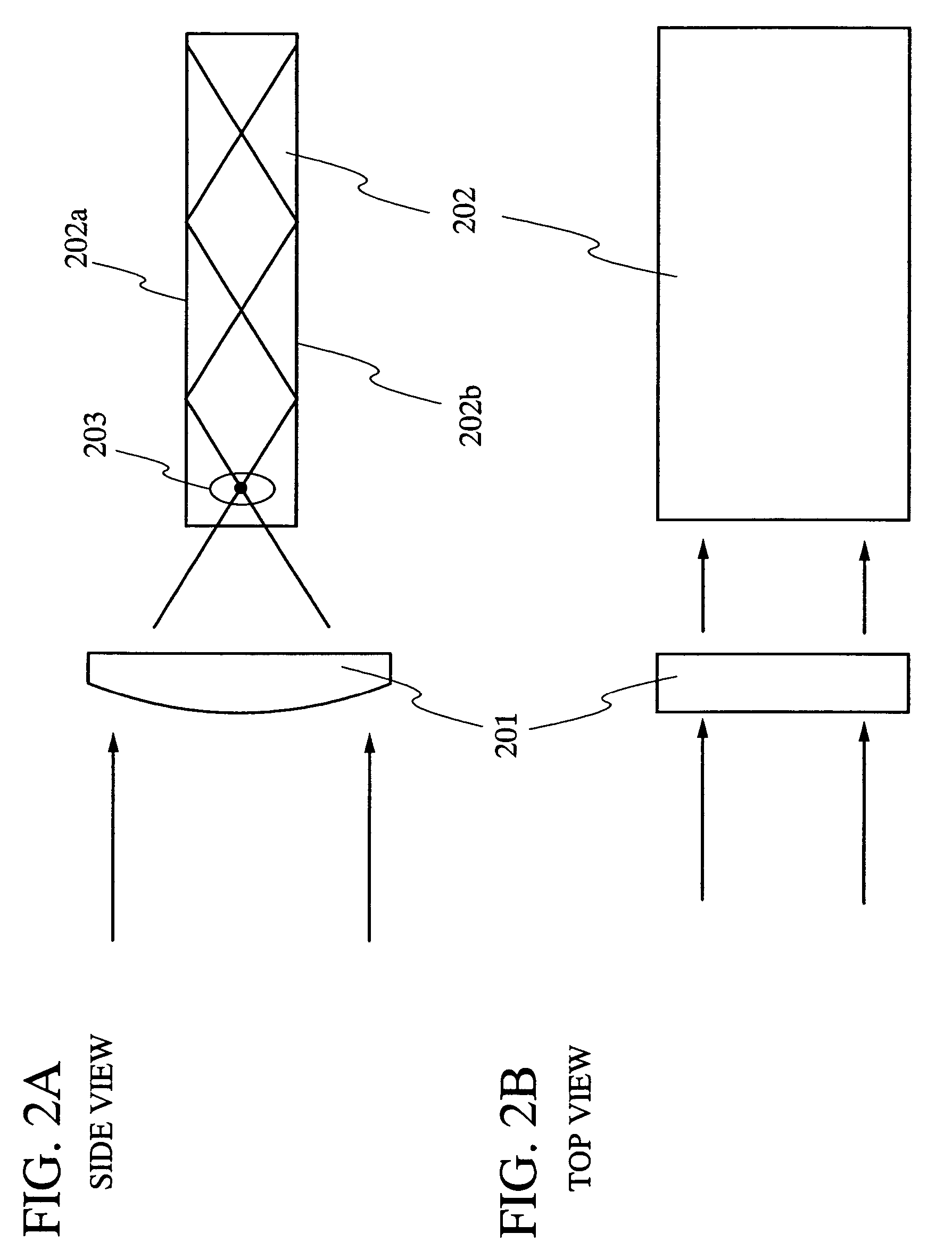Beam homogenizer, laser irradiation apparatus and method for manufacturing semiconductor device
a laser irradiation and laser beam technology, applied in the direction of photomechanical equipment, manufacturing tools, instruments, etc., can solve the problems of low melting point of synthetic quartz, problem in processing accuracy of each cylindrical lens, etc., and achieve the effect of wide margin of laser beam power, reduced loss of photoconduction, and high intensity
- Summary
- Abstract
- Description
- Claims
- Application Information
AI Technical Summary
Benefits of technology
Problems solved by technology
Method used
Image
Examples
embodiment 1
[0060]The present embodiment explains an example using a different optical waveguide from that described in the embodiment mode with reference to FIGS. 4A and 4B.
[0061]In FIGS. 4A and 4B, the laser beam propagates in the direction indicated by an arrow. An optical waveguide 406 used in the present embodiment has a pair of reflection planes provided oppositely. In contrast with the optical waveguide 306 explained in FIGS. 3A and 3B, which is made of the medium having a refractive index of n (n>1) to occupy the region between the pair of reflection planes, the optical waveguide 406 in FIGS. 4A and 4B has a hollow space between the pair of reflection planes, which is filled with the air. The optical waveguides 306 and 406 are different in this point. In addition, the pair of reflection planes of the optical waveguide 406 is arranged so as to act in the direction of the minor axis of the rectangular beam according to the reason explained above. In a side view of FIG. 4A, the direction p...
embodiment 2
[0065]The present embodiment explains an example using the different optical system and the different optical waveguide from those described in the embodiment mode with reference to FIGS. 5A and 5B. In this embodiment, a fly-eye lens is used as a lens array. The fly-eye lens is different from the cylindrical lens array in that a plurality of spherical lenses is arranged in a matrix in the vertical plane with respect to the traveling direction of the laser beam. The optical waveguide 504 has two pairs of reflection planes provided oppositely with a region therebetween occupied by the synthetic quartz. Since the refractive index of the synthetic quartz is different from that of the air, the laser beam is reflected repeatedly in the optical waveguide 504. Specifically, in this case, because the synthetic quartz has higher refractive index than the air, the laser beam is totally reflected in the optical waveguide 504 repeatedly at a critical angle or more, and reaches the exit.
[0066]In ...
embodiment 3
[0069]The present embodiment explains an example using the different optical waveguide from that described in the embodiment mode with reference to FIGS. 6A and 6B. In FIGS. 6A and 6B, a cylindrical lens array 602 is used as a lens array. An optical waveguide 606 has two pairs of reflection planes provided oppositely with a region therebetween occupied by the synthetic quartz. Since the synthetic quartz has higher refractive index than the air, the laser beam incident into the optical waveguide 606 is totally reflected repeatedly and reaches the exit.
[0070]In FIGS. 6A and 6B, the laser beam emitted from a laser oscillator 601 propagates in the direction indicated by an arrow. Firstly, a side view of FIG. 6A is explained. In the side view of FIG. 6A, the direction perpendicular to the paper is the direction of the major axis of the rectangular beam. The laser beam is incident into a cylindrical lens array 602, and is divided in the direction of the minor axis of the rectangular beam....
PUM
| Property | Measurement | Unit |
|---|---|---|
| refractive index | aaaaa | aaaaa |
| length | aaaaa | aaaaa |
| length | aaaaa | aaaaa |
Abstract
Description
Claims
Application Information
 Login to View More
Login to View More - R&D
- Intellectual Property
- Life Sciences
- Materials
- Tech Scout
- Unparalleled Data Quality
- Higher Quality Content
- 60% Fewer Hallucinations
Browse by: Latest US Patents, China's latest patents, Technical Efficacy Thesaurus, Application Domain, Technology Topic, Popular Technical Reports.
© 2025 PatSnap. All rights reserved.Legal|Privacy policy|Modern Slavery Act Transparency Statement|Sitemap|About US| Contact US: help@patsnap.com



